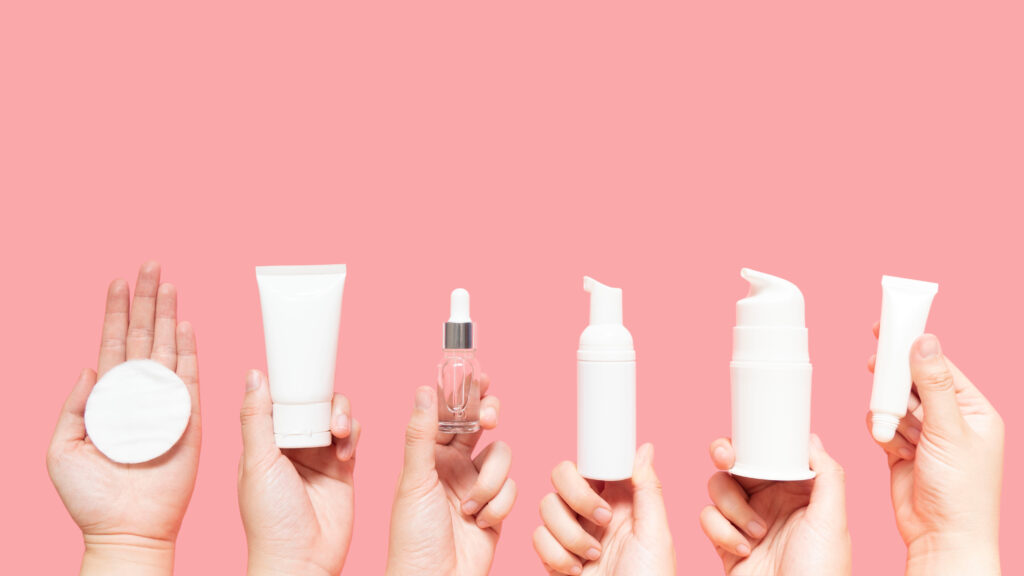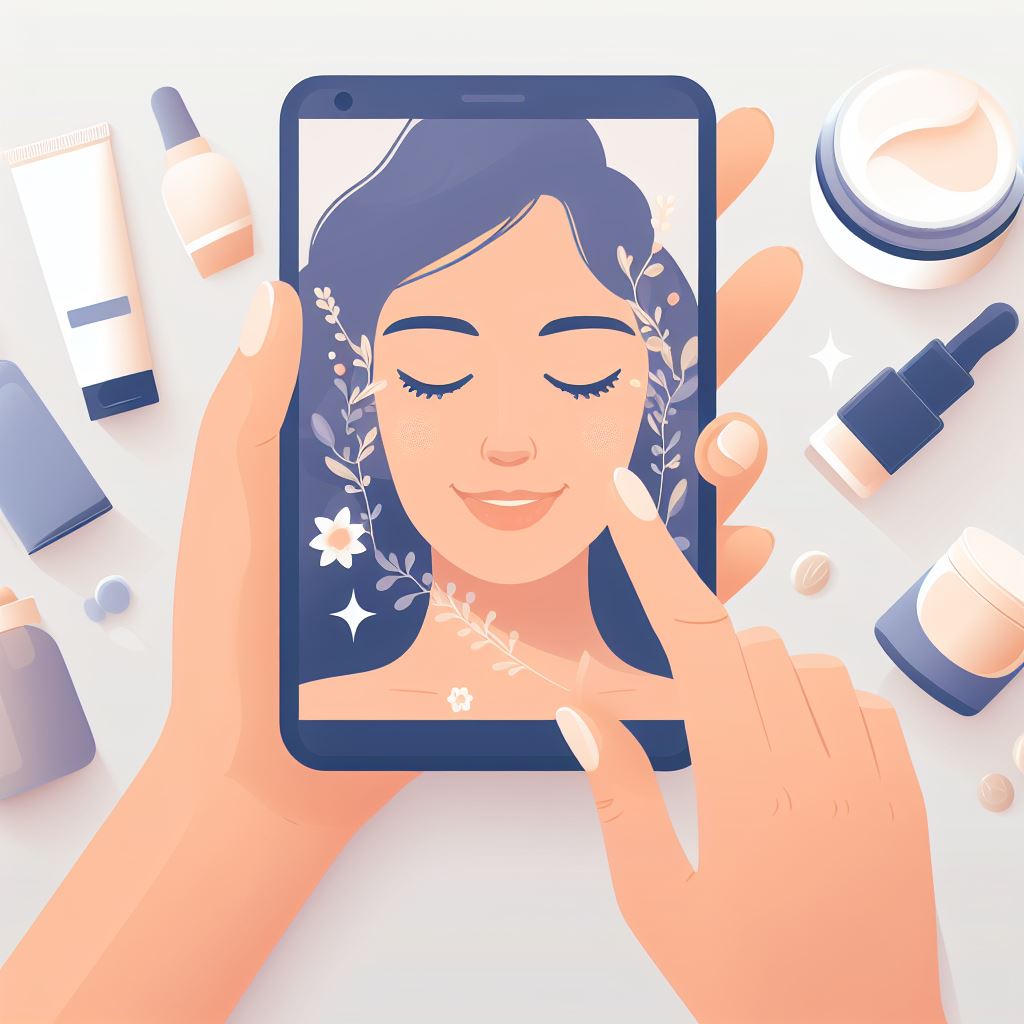If you’ve been in the e-commerce game for a while, you’ll know that paid advertising should be a key element of your digital marketing strategy. In particular, Facebook Ads should be your best friend. And I can say this with a lot of confidence, because I took a brand from making no money from ads to earning £3.9 million in sales with just a £500k ad spend.
During my journey to help this brand come up with a profitable ad strategy, I learnt a lot, and I want to share that information with you today. The tips I’m going to share will be helpful for any e-commerce brand, but I believe that it will hold even more value for skincare brands.
I’m going to share what worked and what didn’t work, so that you can then take this information and implement it into your own ad campaigns to help you design effective Facebook Ads and get the results you want.
Some extra info . . .
Before we dive into the details, I want to mention two things that you might find helpful.
- If you’re interested in learning about effective Facebook Ads but you’re not interested in spending ages reading through a blog post, I have an easy solution for you! I made a video about this exact topic, so you can find that here.
- I run a paid ads agency, Snowball Creations, so if you ever want to talk to me, pop me an email at max@snowballcreations.com!
Key takeaway #1: have a brand that people actually love
When it comes to e-commerce, your brand is a very important lever that you can use to help you differentiate yourself from your competition. This is true for all e-commerce brands, but especially for beauty brands specialising in skincare!
Many skincare users focus a lot on the brand of the products that they use, so if you aren’t trying to increase brand awareness, you’re missing out. It’s similar to fashion – many high-end brands can charge ten times as much as others just because they have a well-known brand.
So, put in the effort! Invest in advocates to help you build brand awareness and give your ads more weight. The easiest and most effective way of doing this is to use influencers.
Many influencers have big followings and have already established their own brands, so if you are able to market your product through them, you can essentially piggyback off of their brand by using it to build your own, which helps with credibility.

Key takeaway #2: focus on average order value and lifetime value
Naturally, having a higher average order value will be better for your business’s profitability. This is nothing new. But what many skincare businesses fail to realise is that lifetime value is also an incredibly important factor to consider when it comes to ads based marketing.
To break it down for you, average order value refers to the average amount that someone spends when they place an order with your skincare company. It’s pretty self-explanatory. The higher your average order value, the more you can invest in ads.
Think about it this way: if you’re only making £15 per sale, then spending £10 on advertising for that sale is probably not a great idea. However, if your average order value skyrockets to around £100, then you can easily spend up to £30 on ads for each sale while still making a comfortable profit.
Some ways of increasing the average order value for beauty brands would be to either increase your pricing for premium products, or to sell products in a bundle. We’ll get to that later.
For now, let’s focus on lifetime value. With certain brands, such as skincare brands, customers are often repeat customers. This means that they don’t just buy from your business once, but keep returning every few months.
The lifetime value thus refers to how much a customer spends on your products over their lifetime. My agency thrives on this, because our clients don’t just pay for our services once-off. They work with us for many months, so they have a higher lifetime value. Just as with average order value, a higher lifetime value allows you to invest more into your advertising.
If you need help with any of this, I recommend hiring a skincare paid ads agency to help you navigate this competitive world.
Key takeaway #3: don't forget the classics
I know it’s super tempting to hop onto new advertising trends like flashy videos and other fancy gimmicks. And those are great!
But they’re not your only options. Classic ad formats are classic for a reason, and the reason is that they work. In my experience, user generated content is also one of the most effective ways of getting a lot of good content for a relatively low price.
When it comes to skincare and beauty brands, though, simple images are often the key to success. Despite single-image ads being one of the oldest ad formats, they still perform really well! Of course, there’s a bit more nuance to this. You need to make sure that your images are of a high quality and that they showcase your product in a unique way.
Don’t limit yourself to just user generated content or videos, but allow yourself to have a variety of different options. At my agency, we’ve found that the more variants we test, the easier it is to narrow down what actually works. If you’re interested in gaining some more in-depth knowledge about e-commerce, I would recommend giving these books a read.

Key takeaway #4: sets and combinations do really well
I mentioned above that one way of increasing your average order value is by selling bundles of things. This is a great way for e-commerce brands to increase their revenue, and it’s a smart move for skincare brands in particular.
After all, most people have multiple steps in their skincare routine. They use a face wash, a toner, a moisturiser – maybe even a mask or a serum. Selling these in convenient bundles makes it much easier for the customer while also increasing their average order value. Promoting these bundles to your target audience can thus be a smart move for your beauty brand as it will increase sales.
Key takeaway #5: make the most of carousels and user generated content
I’ve already touched on user generated content (or UGC) a bit, and now I’m going to really dive into it. As mentioned, there isn’t necessarily one type of ad that does better than another right off the bat in all scenarios; you will need to put in the time and effort to test various ads to see which ones work.
That being said, if there was a winner for creatives on Facebook Ads, the award would either go to carousels or UGC. Carousels act as a type of slide show, allowing you to incorporate multiple photos into an ad. This works great for those in the beauty industry as you can make each slide of the carousel a different step in a skincare routine, which will help you drive brand awareness and increase engagement.
I love carousels and could go on about them forever! They allow you to show a diverse range of products within one ad, making them ideal for Instagram stories. Also remember that Facebook Ads is a part of Meta, which means you can run Instagram ads as well.
More and more e-commerce stores are seeing an influx of sales coming from Instagram, and in particular, from Instagram stories. Carousels are ideal for Instagram stories, so skincare brands should use this creative to their benefit.
When you’re running an ad, it’s going to look like an ad. And there’s nothing wrong with that! But sometimes, you may want to try a more natural approach that doesn’t feel as sales-heavy, and UGC is great for that. If you don’t have the money to pay professionals, ask your friends to post about your product!

Key takeaway #6: keep track of your stock
Picture this: you’re running ads, and they have been smashing it! You’re basically printing money. And then you sell out of your top products, and you need to kill all those great ads.
It’s not an ideal situation. So, make sure that you order enough stock for the increased demand that will come from running great ads!
I know this can be difficult. Stock taking is no one’s favourite activity, and you may not even have the cash needed to buy extra stock. Just keep in mind that the whole aim of ads is to sell more products, and to do that, you will need to have more stock of those products
Bonus tip: don't neglect your tracking
Having amazing ads in place is obviously great, but it’s just the first step. To truly make the most of your ads, you will need to track them to figure out which ads are performing best, and how you can improve upon them.
Facebook tracking alone isn’t enough, so I’d recommend having other tools in place to give you really clean data about your ads. You can learn valuable information about your target audience, such as whether they are mostly desktop or mobile users, which ads they click on, and more.
You need to be able to track the lifetime value of your customers if you’re selling skincare products so having more in-depth tracking systems in place will help with this and more.
In conclusion
You’ve finally reached the end! You may feel a bit overwhelmed with all the info that I’ve spewed at you, but don’t stress.
Paid ads is a massive world with endless knowledge, so if you feel like you’re a bit lost, you’re not alone! I have many more blogs as well as a YouTube channel dedicated to paid ads and other business-related content, so feel free to browse around a bit more. And if you still feel like you can’t wrap your head around paid ads, get in touch with my company and let’s figure out a way to help you!